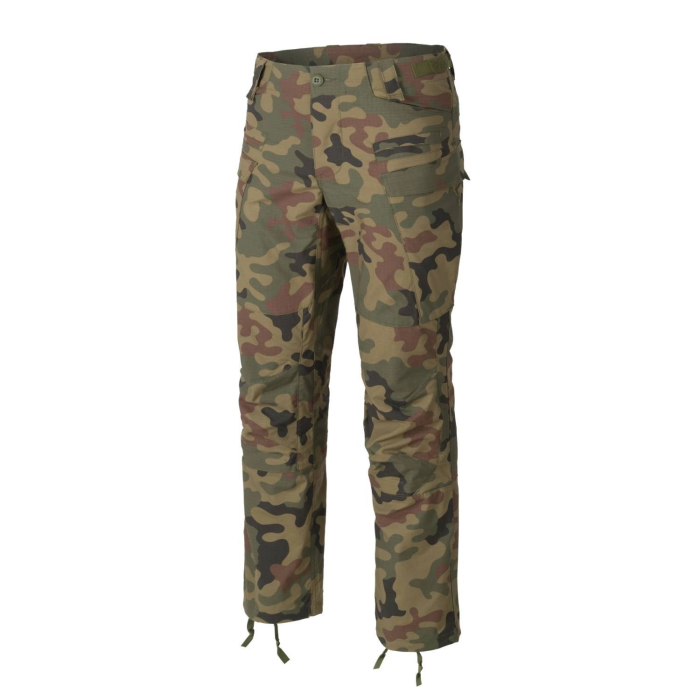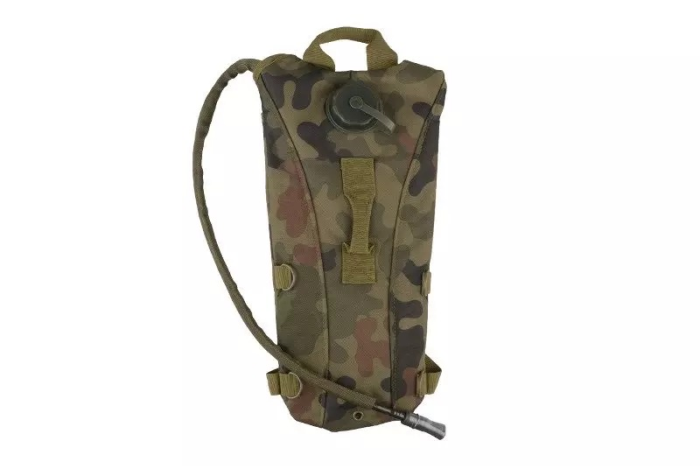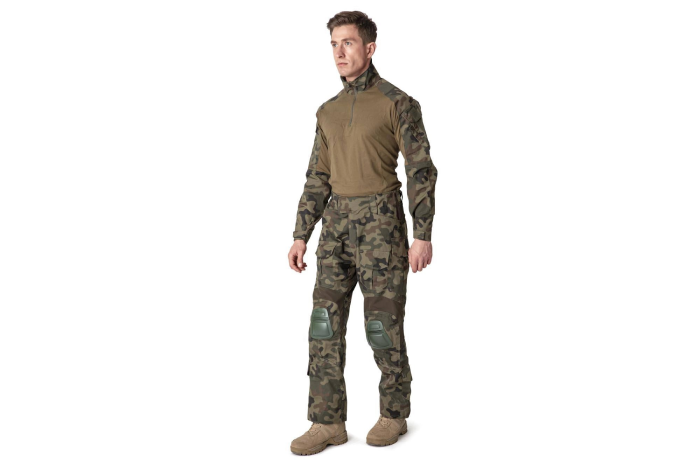WZ.93 camouflage
Where is the wz.93 Panther from?
In Poland, military equipment is often marked with the term "pattern" preceding the date of introduction of the equipment into use. With this knowledge, you can easily come to the conclusion that the camouflage described came into use in 1993. This, of course, is a date that is, to some extent, conventional. It always takes some time before all the equipment is replaced. This can be seen in various armies of the World. This is not just a Polish problem. The camouflage described today replaced the pattern. 89 "Puma". We can easily calculate that there is only a 4-year difference between them. That's why in the 1990s two designs were actually used at the same time.
It is assumed that the wz.93 has its roots in designs dating back to the 1960s and 1970s. However, the modern form of this camouflage is identified with the GROM unit. The system of spots and colours discussed today was supposed to be developed for this military formation. The first example of using uniforms and equipment in this colour is the Polish military contingent during the UNPROFOR mission. For the record. It was an UN-sanctioned military mission in the former Yugoslavia.

What does the wz.93 look like?
Often, especially in English, "Panter" is called "Polish woodland". There is a lot of truth in this statement. If we look at it and squint hard, we can come to the conclusion that at least the colour palette is similar to the classic camouflage from the United States. However, this is quite a simplification. Polish camouflage has two shades of green, one brown and one almost black. It lacks the sandy shade visible in Woodland.

The shape of the spots is also different. Those on Polish uniforms have rather rounded shapes. They touch each other, but only some of them overlap. The pattern developed in the United States has more pointed shapes. They often overlap in a somewhat random way. Polish camouflage seems more orderly in this respect. Finally, the stains on uniforms and equipment in this pattern are rather regular and relatively minor.
“Panther” is quite dark. It's a good thing though. Over time, with use, the colours fade from washing and acquire a permanent colour that no longer stands out against the background. Exactly. What about the background? I won't surprise anyone by saying that this is the most useful colour to use in forest conditions. Due to the dominance of green and colours associated with the ground or branches, it is easy to "disappear" in dense bushes while wearing a wz.93 uniform.
The use of camouflage wz.93
As I have already mentioned, the first use of the described camouflage occurred during the participation of Polish soldiers from the UN PROFOR peacekeeping mission in the former Yugoslavia. I wouldn't be myself if I didn't point out that we can see uniforms and equipment in these colours in Władysław Pasikowski's film "Demons of War". It is true that the film makes some compromises when it comes to the equipment of Polish soldiers, but the wz.93 is certainly visible there.

In addition, you can see the described uniforms in various TV series and films describing Polish military formations. Apart from the camouflage pattern itself, there are various uniform cuts. The wz.93 was used on military equipment and on many fabrics. While the first ones, especially those used for the production of clothing, were made of cotton, the newest ones use more modern materials.
The Wz.93 is still used by the Polish army. As I mentioned in a previous article, plans have been circulating for some time to replace it with a more modern design. Among the contenders for this task was the MAPA camouflage described on the Gunfire blog.
Wz.93 in airsoft
There is no doubt that the camouflage described today is extremely popular on the airsoft battlefield. In fact, many militaries, survival, outdoor or simply hiking enthusiasts wear "panther" clothes with undisguised pride. This is an often-recommended pattern of uniforms for forest conditions. It must be admitted that it works well there. Its popularity is also influenced by the fact that the availability of surplus equipment and clothing reduces prices.

Apart from companies sewing for the army, there is no problem in obtaining uniforms and equipment in the described pattern. We can find them in typical airsoft stores. Manufacturers have long noticed the popularity of this camouflage and met customer expectations. For this reason, there is no problem finding equipment in the described design in various price ranges. This is very good news, especially for airsoft players who are not always willing or able to spend large amounts of money on equipment.
Polish forest camouflage
There are camouflages whose popularity extends beyond national borders. Patterns used in the United States troops certainly enjoy such a status. Others, even though they have not become part of the official equipment of any official military formations, also have a chance for an international career. Finally, there are those that, for practical reasons such as availability or effectiveness, or due to variously understood patriotism, are chosen by people associated with the given country in which they are used. This, in my opinion, is the subject of today's article.

WZ.93 "Panter" is a camouflage with an interesting history. It could be seen in various places around the world. It certainly holds a very important place in the hearts of many airsoft players and military fans in Poland. I hope that other national camouflage patterns are just as popular in their countries of origin.
Author: Boreq
Check out similar entries:






